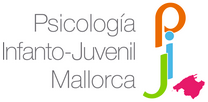
You may increasingly know people who have been diagnosed with fibromyalgia or have been diagnosed with fibromyalgia yourself. The advances made in research on this disease are of great relevance. Years ago, and due to lack of knowledge, these people could be labeled as “wimpy” or “lazy”. Today, we know much more about fibromyalgia and it is being destigmatized little by little. To contribute to this visibility, in this article we are going to explain what fibromyalgia is and what type of psychological interventions are usually used to treat it.
First, it is important to differentiate between acute pain and chronic pain. Acute pain has an identifiable cause, its onset is sudden, and its duration is limited. This type of pain is adaptive as it warns us of the existence of a possible damage, thus facilitating our survival. Chronic pain is defined as pain that lasts for 6 months or more, despite the fact that there is no previous injury or that the injury or damage has already healed, and therefore it has no clear cause. In this case, the pain is no longer adaptive and generates great alteration producing a decrease in the quality of life and increasing the possibility of developing anxiety and mood disorders.
Fibromyalgia has been defined as a syndrome characterized by chronic and generalized musculoskeletal pain, and sensation of pain on pressure of certain specific tender points. The pain’s perception is altered since they perceive as painful stimuli that usually are not. In addition, it is usually accompanied by insomnia, morning stiffness, fatigue, cognitive disturbances (concentration and/or attention difficulties, memory loss) and affective disturbances (symptoms of anxiety and depression). All these symptoms can restrain the life of those who suffer from it and the people around them.
The diagnosis is based on the clinical manifestations of the patient. There are no objective indicators to diagnose this syndrome, but a good physical and analytical examination is necessary to rule out other suspected diseases. An early diagnosis will be useful to reassure the person, to avoid tests that are not necessary and to direct the person as soon as possible towards a treatment that is oriented to his problem.
The course of fibromyalgia is chronic with outbreaks in which symptoms increase. In many cases, these outbreaks are triggered by situations of emotional or physical stress, or by environmental changes. This syndrome has a high prevalence among adults and has been found to be more prevalent in women than in men. Studies carried out with members of the same family suggest that there is a genetic component in the development of fibromyalgia, which increases the individual predisposition to develop the syndrome. Although the exact causes are not known yet, many hypotheses have been proposed that consider biological factors, such as alterations in the pain nervous pathways, functional and morphological changes in pain receptors, alterations in perception and somatization, etc. Certain social and emotional factors have also been shown to influence the evolution of the syndrome. For example, it seems that the tendency to catastrophism or hypervigilance towards our body’s symptoms increases the intensity and duration of pain. It is also known that a reduction of physical activity level, sustained stress or the loss of significant social relationships can increase the symptoms of fibromyalgia.

Fibromyalgia has no definitive cure. The aim of intervention is to reduce pain and the accompanying symptoms and improve the person’s quality of life. Traditionally, therapeutic interventions have been based on pharmacological approaches, but these have not been entirely effective on their own, so new approaches have been proposed. As seen above, psychological factors play a very important role in this syndrome and their approach from psychotherapy will be fundamental. Scientific research points to cognitive behavioral therapy as an effective method for treating fibromyalgia. The aim of this therapy is to modify maladaptive thoughts, emotions and behaviors and thus promote feelings of self-efficacy and positive coping strategies to reduce emotional discomfort. Some of the most relevant therapeutic procedures from this therapy are the following:
- Psychoeducation to provide information about fibromyalgia, pain and the factors that influence its maintenance or improvement. In many cases this information is not only for the patient, but also for the patient’s family members.
- Physical exercise and programming pleasant activities, to improve physical functioning and promote a more positive reinforcement environment for the person and therefore, his mood increases.
- Relaxation techniques to reduce muscle tension and improve pain control.
- Sleep hygiene strategies to improve sleep quality and reduce insomnia.
- Problem-solving and assertiveness training to improve coping with problems associated with fibromyalgia and to be able to ask for and obtain social support when needed.
- Cognitive restructuring to identify irrational thoughts and replace them with more adaptive ones. This may help to reduce the negative emotional state and encourage behaviors aimed at reducing pain and improving well-being.
- Mindfulness to learn how to focus attention on what happens in the present moment (our sensations, thoughts …) in an intentional way and without judgment.
Although fibromyalgia does not have a definitive cure, its symptoms can be greatly improved through psychological therapy. If you feel identified with this article and you think we can help you, do not hesitate to contact us.
Aina Fiol Veny (B-02615)








